For all you article skimmers out there, let me save you some time. Here is the bottom (okay, yes in this case top) line: The pitching process is highly problematic and – in the long run, and across the industry – is detrimental to both client and agency. If you want to know why we feel this way and how we back it up…keep reading.
Pitching – the process of commissioning a number of agencies to compete for a client contract by creating (semi) hypothetical work – has been standard practice in advertising for decades as a way for brands to vet new agencies and for agencies to land the next big client. It’s a way for clients to shop work out without the commitment to sign with anyone and for agencies to jump up to the next caste of client notoriety – and along with it, more street cred with the other agencies on the playground. However, in the past few years there has been increasing dialogue throughout the visual communication community (graphic design, illustration and advertising) against pitching as a viable – and sustainable – practice.
By, at the very least, rethinking how pitches work or eliminating them altogether we can change the industry and we believe it will ultimately lead to healthier and more fulfilling client relationships. Below, are the six major reasons behind our thinking, and at the bottom of this page are links to other organizations who have spoken out on this subject. Like we said up top, this process is bad for everyone so this isn’t a client-bash article. We will be jumping back and forth across the tracks and looking at this from all angles.
One. Pitches devalue the agency’s time and talent.
Pitches take time, lots of it. Whether there is a pitch fee (which does happen) or not, it rarely covers the cost to the agency to participate. And there is only so much time in the day. If the team is working on the pitch, they aren’t focusing on their existing clients. It’s hard for us to justify signing a contract with a client, with all the promises of service and custom attention that we all make, only to back burner them when pitch season rolls around; or, to ask our team to keep all those plates spinning – and we wonder at turnover rates.
Backing up, the idea of asking a team of professional experts (let’s not forget our value to the client) to perform work for free in hopes of snagging that dangling carrot just doesn’t sit well with us. You don’t – can’t – go to a restaurant and taste the food before you order and agree to pay for it. You can’t ask three carpenters to put a new roof on your house before you agree to sign a contract with one of them. We could go on, but once things are put in perspective the situation becomes pretty clear.
Two. Pitches are not an accurate representation of the agency or its work.
Clients want good creative work. The entire point of a pitch is for a brand to feel confident in choosing a creative partner who they are going to entrust with growing their brand and to whom they will pay a lot of money to do it. It’s in a client’s interest to work with the best agency and to put out great creative and strategic work. The client is making a change, whether working with an agency for the first time or finding a new one, they are in a point of transition. They want to do something new and different, and they’re looking for a shop that they feel is a good fit. It’s a noble thing.
When an agency goes into a pitch it’s usually all hands on deck. The team bursts out of the phone booth of normal work flows with their super ‘pitch suits’ on. They once again muster up the bright eyes and bushy tails to dream of solving the world’s problems through creativity. The expectations are super high which often leads to late nights and weekends for the creative team.
There is also the issue that agencies are handed a brief they had no part in writing and with little to no time to put in the research and strategy necessary for creating work that is sound and effective. They do the best they can with what they have but by definition pitch work is far from the quality of work that agencies would want to put out. Many times the work shown in pitch meetings ends up being exciting and glitzy but lacking real depth. Large agencies sometimes employ dedicated ‘pitch teams’ whose sole responsibility is to create winning pitch work. This is hugely misleading to the client because the work they commit a relationship based on is not the work they will get once boots hit the ground.
Three. There are few protections for the agency during the pitch.
There are usually terms set to define the scope of a pitch and there are consultancies and other third party entities that may be hired to manage the process, but there is very little to stop a client from hijacking the whole shebang. For any number of reasons – or none at all – the client can pull the plug at any time. On the other hand, the client can extend the process without warning or explanation. God forbid there’s a re-brief.
Four. Pitches generate unhealthy practices/dynamics.
One of the most immediate issues here is over-delivering. On top of everything else we’ve talked about, when agencies are competing against each other one of the ways they try to stand out is to outdo each other. Whether it’s elaborate office transformations or simply producing way more deliverables and examples in an effort to impress the would-be client the stakes only ever increase. We’re big on precedent and when you establish a client relationship on the foundation of over-performing it sets the agency up for failure. You can only overperform so much, and for so long.
Pitches also inherently favor certain agencies, or types of agency, over others. First, agencies with the most resources have the biggest advantage. As noted above, the larger agencies and conglomerates can afford to throw more time, energy and resources towards a pitch. The other group that is favored are the agencies who have extra time on their hands, which means they either don’t have other client work or they are comfortable neglecting their clients to win the pitch.
One of the causes, and ironically, outcomes of the pitching process is that agencies are forced to misrepresent themselves, which we touched on above. Clients do not trust agencies, so – understandably – they hedge their bets and ask for proof of purchase before they sign on the dotted line. To be fair, many agency practices have led to the loss of that trust and we need to be willing to admit that before anything can change. But let’s acknowledge that the cycle is self-perpetuating. Clients don’t trust agencies so they ask them to demonstrate their abilities. Agencies jump through hoops to impress the client which is not accurate to how day-to-day work is done, nor is it a good example of the level of thinking and problem-solving the agency can do, and round and round we go.
Five. There is no guarantee that the blood and sweat of a pitch will result in securing the project/client.
So, why do we do this to ourselves?
Six. Pitched & Ditched as a portfolio category.
One last thought. This opens up a completely different discussion but that’s kind of the point. One of the reasons creatives look forward to pitches is to generate new work for their book. Often, pitches are the only time that the creative team gets to flex and show what they’ve got. We need that opportunity. It’s crucial for creatives to dream, to think without handcuffs. The tragic side to that story is the reality that we don’t often get to do that on a daily basis because clients just don’t sign off on those ideas. It’s as much a reality of creative budgets, as it is marketing execs not taking risks and trusting their creative team/agency, as it is agencies taking responsibility for guiding their clients and earning their trust…or – hard truth – for working with those clients to begin with.
Conclusion
What good is it to just complain about how things are? We want this to be a constructive contribution to the conversation. We hope you check out the links we’ve included as they say a lot of the same things we have, only better. We also hope that it gives you a broader sense of who and how many people are talking about this.
In the spirit of being constructive we submit two things that can help move things in the right direction. Both of these ideas are articulated by several of the organizations we’ve cited below.
1. Budget appropriate fees for participating agencies
We consider this to be in the ‘at the very least’ category but it will go a long way to ease the burden that pitches place on agencies and will also make clients more purposeful and deliberate as it is a more serious investment.
2. Assess agencies based on past work/success
Creatives are often told that you’re only as good as your last project. That doesn’t sit with us. The process is treated like dating. Everything hinges on the first encounter. A pitch shouldn’t be conducted the same as a Tinder date. A better way to go about choosing a new agency is to look at the work the agency has already done. Ask agencies to pitch their portfolios and how their experience allows them to effectively solve your business challenges. The focus should be on the thinking behind the work as well as the quality of execution. If an agency has developed a deep level of specialty it will be pretty clear whether it makes sense to work with them. On the other hand, if the agency has demonstrated solving many different problems with proven success for the client’s business, chances are they will be able to adapt their process to your business/brand.
One last thing we should mention on this point – just as treating a pitch like a date, it probably won’t work to start a new romantic relationship by highlighting all of one’s past involvement. Just saying.
Here’s the bottom line (for real this time). Nobody wants bad work. Clients don’t want to pay for it, and agencies don’t want to make it. There are no good guys or bad guys here, only an imperfect (and harmful) system. Our goal by calling out the system is to contribute to a larger conversation that is trying to influence positive change in the industry with the belief that everyone benefits for it.
Links




